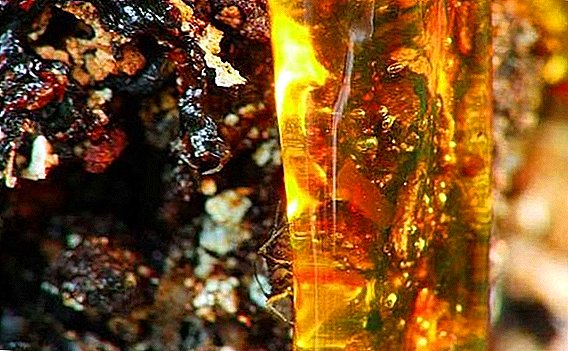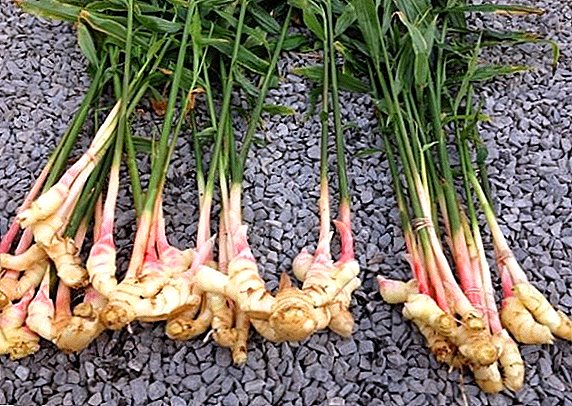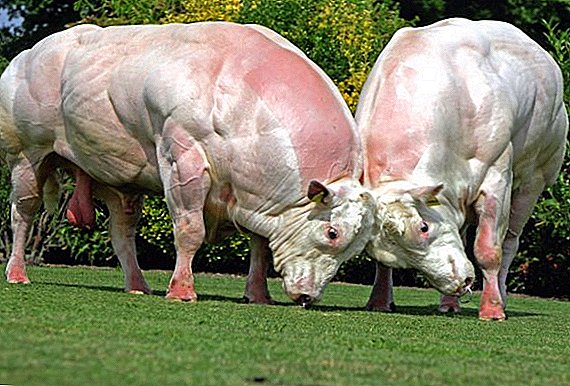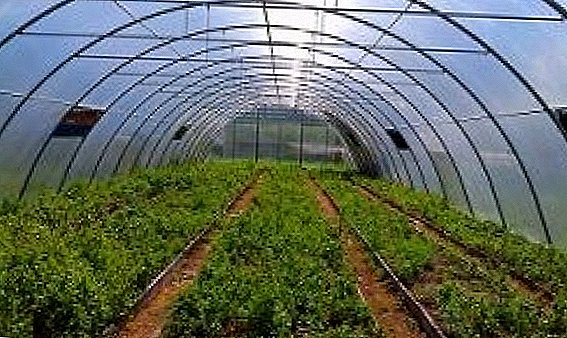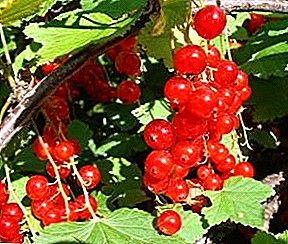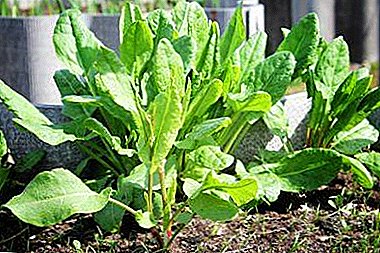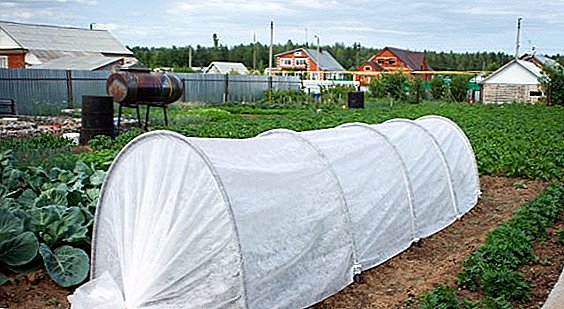 Many amateur plant growers are forced to solve a problem in early spring: how to deal with seedlings, how to protect it from frost, where to grow primroses or an early harvest of greenery. Not everyone can afford a greenhouse - it requires a large investment of labor, time and money.
Many amateur plant growers are forced to solve a problem in early spring: how to deal with seedlings, how to protect it from frost, where to grow primroses or an early harvest of greenery. Not everyone can afford a greenhouse - it requires a large investment of labor, time and money.
Not many gardeners have such resources (often it is difficult to find an empty place on the site). A good alternative to the greenhouse and the solution will be the arched tunnel cover-greenhouse "Snowdrop".
Did you know? Greenhouses are designed for many years of operation, may have their own heating and watering systems, require substantial investments. Greenhouses are built in the spring, usually serve one season, not the roads. Heating occurs due to the solar heat and the heat of the compost (manure), which was planted from the autumn to the beds. The main goal of the greenhouse is to protect seedlings and seedlings from sudden changes in temperature, from frost. As a rule, the construction of a greenhouse is simple, materials - cheap. The demand gave rise to a decent offer: in 2005, a unique hotbed "Snowdrop" was created by the company "BashAgroPlast" from Neftekamsk (Bashkiria), which is available in three versions - 4 m, 6 m and 8 m.
Greenhouse "Snowdrop": features and equipment
Greenhouse "Snowdrop" favorably has a number of features:
- low weight and mobility. Weight is influenced by the length of the structure: 2.5 kg (four-meter greenhouse), 3 kg (six-meter), 3.5 kg (eight-meter). To this weight you need to add the weight of covering material (42 g per sq. M). Greenhouse "Snowdrop" quickly and easily can be moved to another area. If it is necessary to protect the seedlings additionally, the greenhouse can be put in an ordinary greenhouse;

- simplicity and originality of design. The device of the greenhouse "Snowdrop" is striking in its simplicity and ergonomics: plastic arches from low-pressure polyethylene (pipes with a diameter of 20 mm), material for a cover with fixing clips; mounts for installing a greenhouse.
Access to the plants is from the side. Covering material can be lifted, giving access to sunlight (for this purpose, special sleeves are sewn, through which arcs are stretched). The design is corrosion resistant, has sufficient rigidity and stability;
- repeated use. Unlike other greenhouses designed for the season, due to the construction materials and the covering of the SUF-42 Snowdrop, when properly stored, it will last 3-4 seasons in winter;
- unique covering material. Mini-greenhouse "Snowdrop" from the manufacturer "BashAgroPlast" is provided with polypropylene non-woven cloth - SUF-42 or spanbond.
This material is air- and water-permeable (it is possible to water plants through a spunbond), it lets in shaded sunlight (protects from the midday sun in summer), protects from pests, is environmentally safe and strong (resistant to temperature extremes, mechanical effects, it can be washed in washing machine);
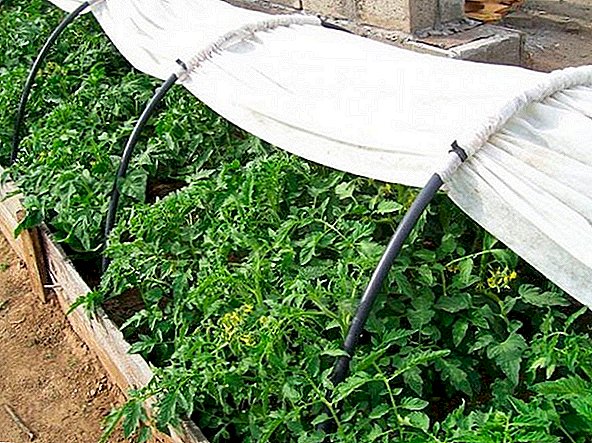
Important! In order to increase the lifetime of the spunbond, it is necessary to properly care for it. After the end of the season, collecting the greenhouse, the material must be removed, cleaned (if necessary, washed), dried. After this spunbond roll and place in polyethylene. Store in a dry and dark place.
- versatility. From the fact that you can grow in the snowdrop greenhouse, you should first of all indicate the most diverse seedlings (cabbage, tomatoes, cucumbers, etc.).
During the whole season, it creates the necessary conditions for growing greens (parsley, sorrel, dill, lettuce, etc.), short plants, peppers, eggplants, onions, garlic, self-pollinating vegetables, flowers, etc. In the midday heat the spanbond can be lowered, in order to protect the plants from burns, in the morning and in the evening, lift them up (fixed with clips).
Package includes: covering material (4, 6 and 8 m), arc for a greenhouse (always one more than a meter - 5, 7 and 9), mounting accessories (clips for fixing material - 11, 15 and 19 pieces), 20-centimeter plastic legs for arcs (11, 15 and 19 pieces), packaging for transporting a greenhouse and instructions.
Fittings for installation, which is included in the “Snowdrop” glasshouse for 4 m, 6 m and 8 m, are interchangeable. 
How to choose a place to install a greenhouse
A suitable place for the installation of the greenhouse "Snowdrop" must be picked up in the fall (it is necessary to lay the humus in the beds in advance). Necessary conditions for him:
- sunny side;
- protection from strong winds;
- lack of excess moisture;
- convenient approach.

Greenhouse do it yourself
Mount and install a greenhouse "Snowdrop" with their own hands under the power of each. The instruction, which is included in the kit, describes in detail all the operations and their sequence during installation. You will not need to exert excessive physical effort, additional tools and special equipment are also not required: everything you need is already at hand - in the package.
How to install a greenhouse "Snowdrop"
The package contains a ready-to-use greenhouse "Snowdrop" (four, six or eight meters). You just need to remove and mount it. The greenhouse installation algorithm is as follows:
- carefully open the package (from the bottom side) and pull out the pegs and clips;
- without removing arcs from the package, insert the pegs into them;
- we put the pegs on the ground and gently squeeze the packaging (useful in winter for storing a greenhouse);
- we fix the first arc into the ground, no matter what the dimensions of the snowdrop greenhouse are, we stretch the covering material (thanks to the sleeves, it is already attached by the manufacturer to the arcs). Arcs are equally spaced. Stretching the material from one side, we strengthen the arches (the ground around the pegs must be well compacted);
- then we reinforce the arches on the other hand by adjusting the tension (where it is necessary to rearrange the arc);
- we fasten the ends (it is necessary to tighten the cord, put a loop into the peg, tighten it and fix it at an angle in the ground (by analogy with the tent fastening)). The material on the end can also be securely fixed with stone or brick;
- fix the covering material on the arches with clips (regulate the height of the covering material when caring for plants).

The entire installation of the snowdrop greenhouse took seven to ten minutes.
Making "Snowdrop" do it yourself
Amateur gardeners and gardeners, who love to do everything with their own hands and who have a lot of useful stuff gathered in a compound or a plot, will be able to build a mini-greenhouse, by analogy with Snowdrop.
First of all, it is necessary to make the frame - the arc of the future greenhouse. The length of the arc of the greenhouse "Snowdrop" is 1.5 m. For arcs, you can use reinforcing iron / thick wire (it is easy to give the desired shape and do not need pegs for fasteners), PVC pipes (in this case, you will need pegs).
Did you know? An old watering hose is perfect for making arches for a greenhouse: cut the rebar of iron or wire into pieces of hose to cut into 1.5-2 m and give the desired shape.The next step will be the selection and stretching of covering material. Usually, they use what is on hand - polyethylene, oilcloth, polymer films, agrofibre, etc.

To make a snowdrop-type greenhouse, you can purchase a piece of SUF-42 (10 m packages are sold in stores) and clips for height adjustment (you can do with large clothespins or simple ropes). The covering material can be made of thinner agrofibre (SUF-17, 30) or thicker - SUF-60 (it all depends on the climatic conditions of the region of residence).
For better attachment to the arcs, a special sleeve is made on the agrofiber (stitched) through which the arc is passed. For better stability, the fabric can be pressed to the ground with bricks, boards, a roller from the ground.
Pros and cons of the greenhouse "Snowdrop"
Greenhouse "Snowdrop" causes controversial reviews: beautiful, terrible. The simplest explanation of a negative assessment may be the fact of acquiring a fake (there are many similar products on the market in China). Original products have both advantages and disadvantages that must be weighed before making a decision on the use of this greenhouse.
Pros:
- easy installation;
- availability;
- reusable;
- protection of plants from hail;
- protection of plants from frost (up to -4 degrees Celsius) and sunburn;
- early use (when the snow melted - you can already put the snowdrop greenhouse);
- good air circulation;
- permeability of covering material;
- gradual hardening of seedlings before transplanting;
- protection from birds and pests;
- convenient access to plants;
- compactness and ease of transportation.

Minuses:
- fairly weak resistance to wind;
- plastic legs-pegs can break off and pull out;
- the eight-meter greenhouse is difficult to install and maintain for one person;
- tall plants closely.
Important! Agrofibre worse than polyethylene retains heat. When frosts are above 5 degrees of frost, the greenhouse on top is additionally covered with polyethylene. It also helps when you need to reduce moisture evaporation.
Features of storage and transportation of greenhouse
 Special conditions for storage in winter greenhouse "Snowdrop" does not require. Store it in its original packaging. The only condition - the room must be dry. The assembled greenhouse is compact and does not take up much space.
Special conditions for storage in winter greenhouse "Snowdrop" does not require. Store it in its original packaging. The only condition - the room must be dry. The assembled greenhouse is compact and does not take up much space.
Transported greenhouse folded on any vehicles.





